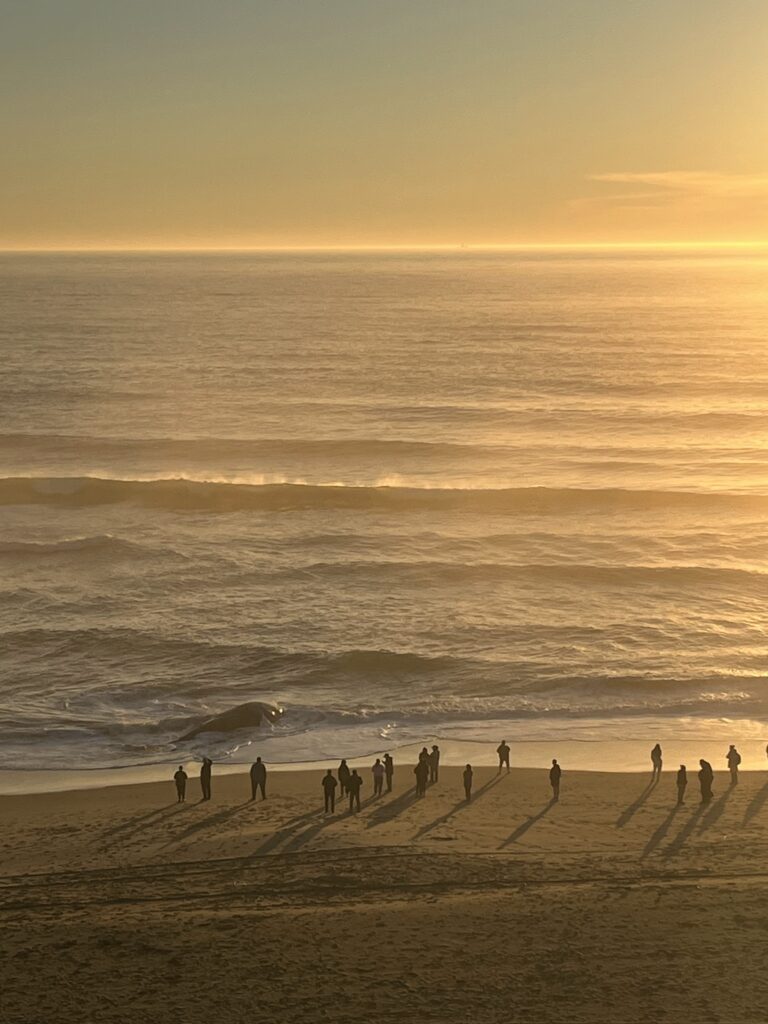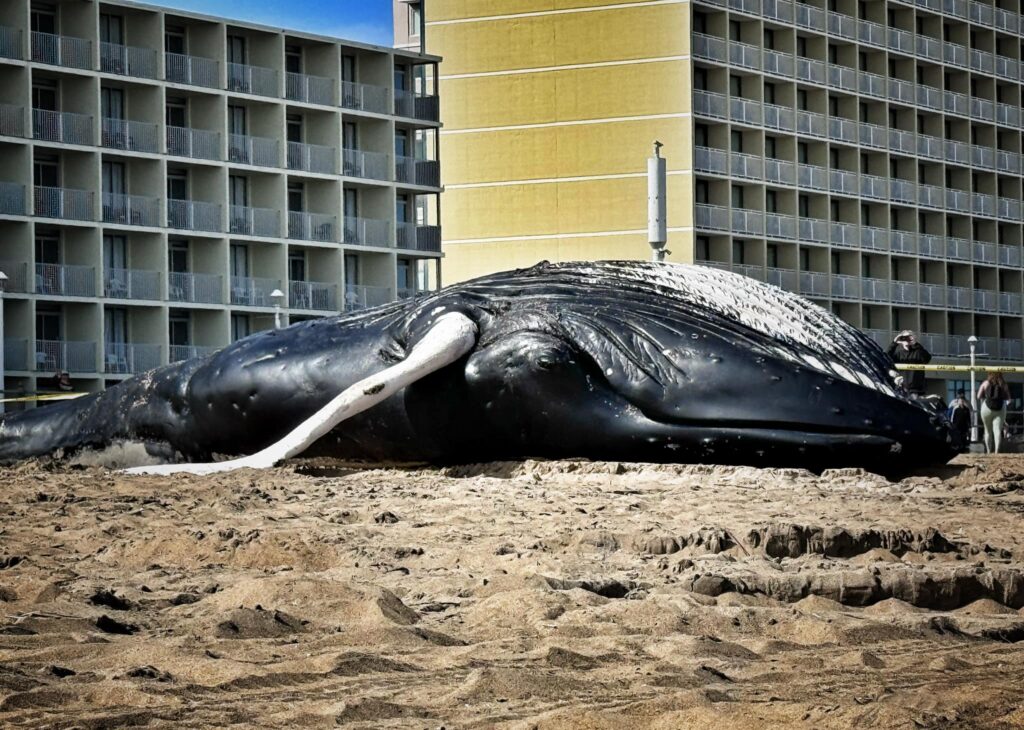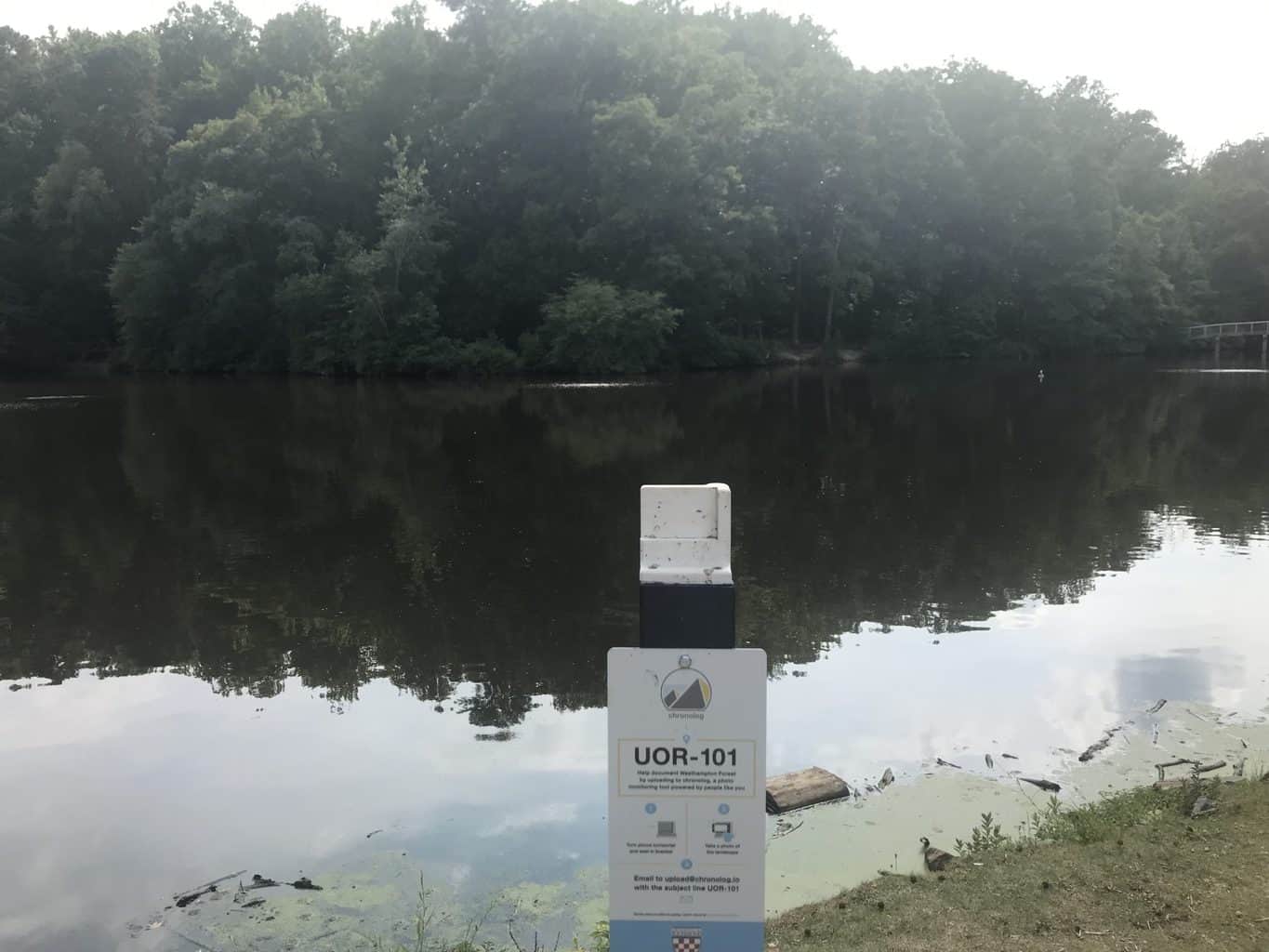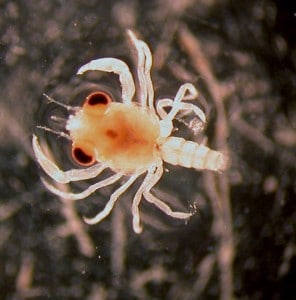A dead humpback whale caused a stir in Virginia Beach this weekend, washing ashore on a busy stretch of the beach near 25th Street. On Monday, marine biologists performed a necropsy to determine how it died. Believe it or not, this whale is one of two dead humpbacks found on the same day in Virginia Beach.
NOAA Fisheries says the first report of a dead humpback whale came in Saturday, March 2. The whale was floating by the Chesapeake Bay Bridge Tunnel. The Virginia Aquarium and Marine Science Center Stranding Response Team and Virginia Marine Resources Commission responded to the water, documenting the dead whale and collecting samples. The next day, the whale washed ashore near 24th Street.
The Stranding Response Team was on the beach Monday conducting the necropsy (an animal autopsy). They say the whale was a juvenile male, 32 feet long and weighing about 32,000 pounds. The team was able to collect samples, photos and data from the whale’s remains to determine it if was healthy before it died and try to find clues that point to a cause of death.

The Aquarium notes that it’s not guaranteed they’ll be able to determine a specific cause. It was a true team effort, with help from the Virginia Beach fire, police and public works departments and agencies from North Carolina stepping in, too. Once the team finished the necropsy, they buried the whale’s remains deep in the sand, far down enough that they say it won’t interfere with beach activity.
On Sunday, the same day the whale washed onto the beach, a second humpback whale was reported floating about three miles offshore of the Rudee Inlet. NOAA Fisheries and the Virginia Aquarium tracked the floating whale and it, too, eventually beached—this time at False Cape State Park.
The whale near 24th Street captivated visitors and Virginians alike. Though it was a juvenile humpback, it was a first for many to see an animal of such size up close in a touristy area. Many shared pictures online, including local Troy Gleason, who described seeing the whale in person as “surreal”.
Marine biologists had a barricade set up around the necropsy site. They remind people not to get close to a stranded marine mammal like this. “All whales are protected by the Marine Mammal Protection Action which makes touching these animals illegal,” says a Virginia Aquarium spokesperson.
NOAA asks that anyone who sees a stranded whale or other marine life call the marine mammal and sea turtle stranding hotline (866) 755-6622, to be directed to a trained responder.
Winter and early spring are a common time for dead whales to wash up. Humpback whales travel along the mid-Atlantic coast as they migrate more than 1,000 miles each year between tropical breeding/mating destinations and northern feeding areas.
An Unusual Mortality Event was declared for humpback whales in the Atlantic in 2016 and is ongoing today. One of the causes, according to NOAA, is vessel strikes.
While we don’t know if boat strikes were the cause of the two most recent deaths, there were whale-protecting slow zones for marine traffic in effect at the time the two were found dead. The slow zones are put into place to protect another large whale species that migrates in the Atlantic: the endangered North Atlantic right whale.
You can see the current slow zones in effect off Virginia Beach and Ocean City, Maryland, here.



